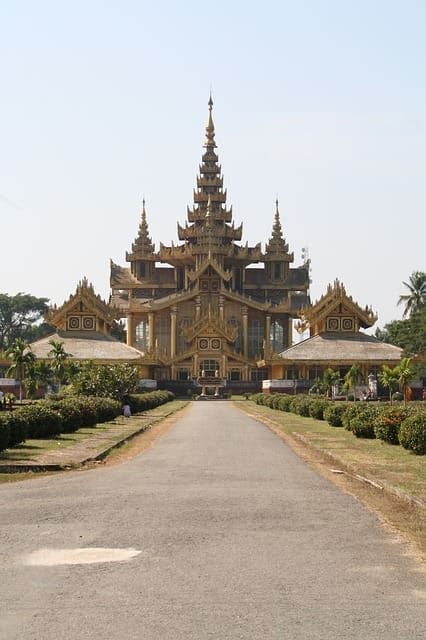Ethical travel is an inclusive, integral approach to navigating the globe while considering the local community and economy, minimizing your carbon footprint and environmental impact, and making a concerted effort to connect with the people and places you visit. Since tourism in Southeast Asia is often the primary source of income for many locals, supporting community-based tourism and paying a reasonable rate will help make a difference.
For the mindful Western traveler, the complexities of Southeast Asian tourism can pose a real challenge, so it is essential first to research the countries you intend to visit.
Then, to help you on your way, this article will outline five primary considerations for ethical travel in Southeast Asia, such as:
- Avoiding wild animal tourism in favor of sanctuaries and wildlife reserves.
- Respecting religious and cultural etiquette.
- Supporting the local economy.
- Volunteering for community projects.
Reduce Your Environmental Impact
Whether you’re visiting the mystical Andaman Islands in hot pursuit of an underwater tropical adventure or heading to the Himalayas to embark upon a base-camp trek, you should always be mindful of your environmental impact upon the natural world.
Choosing an ethical dive company such as “Dive India” in Swaraj Dweep (formerly Havelock Island) is a good starting point for the water-obsessed mid-range traveler. Or, if you’re a keen yogini surfer-bum, check out Soul and Surf in Kerala. They pride themselves on maintaining ethical standards and consciousness and providing jobs, skills, training, and support to local people.
When you’re on the road, always carry a refillable water bottle and avoid single-use plastic wherever possible (this is not easy as many goods tend to be plastic-wrapped for hygiene). As for toiletries, choose an environmentally friendly sunscreen and use natural products to avoid polluting the water or further contributing to coral reef devastation.
When visiting natural beauty spots, always take your litter home with you to dispose of it appropriately.
Finally, where possible, take local public transport; it is cheap and affordable and will inject some authentic cultural flavor into your travel experience!

Keep Cultural and Religious Etiquette in Mind
Southeast Asia is positively full of sacred spaces, temples, religious festivals, and ceremonies. As a visiting Westerner, you must read up on cultural and religious etiquette before you visit, as each country has its own rules, customs, and values.
Western travelers should dress modestly in Southeast Asia to not offend the locals, and females should pack some long-sleeved lightweight cover-ups, plus a sarong or shawl for temple visits.
Always do your research before visiting a religious shrine or attending a cultural festival, and brush up on some essential dos and don’ts, such as: whether to remove your shoes before entering an inner sanctum.
Whether you are required to cover your head and shoulders before entering a temple when it is appropriate to practice noble silence in an ashram, whether or not alcohol is prohibited where you are, and finally, learn the most appropriate greeting. Bowing is a common form of greeting in Asia.
Also, be sure to learn some local dialect to converse with the locals in their native tongue. Utilizing these tips will help you be an ethical traveler in Southeast Asia.
Say “No” to Exploitative Animal Tourism in Favor of Sanctuaries and Conservation Parks
If you’re off to Asia in search of seeing a tiger in its natural habitat, do visit a government-appointed sanctuary such as Melghat Tiger Reserve in Maharashtra, India, or Chitwan National Park in Nepal, where conservation efforts have increased and benefitted the tiger population.
When it comes to elephant tourism, avoid the tacky elephant rides offered by commercial tourist outlets and visit a sanctuary instead for a more authentic elephant-tourist interaction.
For example, for the high-end traveler, you could visit Anantara Golden Triangle Elephant Camp in Chiang Rai, Thailand (part of the Golden Triangle Asian Elephant Foundation) – it is a luxurious Jungle Book-style enclave and progressive charity. It rehabilitates and protects abused elephants. Or, for more generalized information on elephant tourism, look at the Save The Elephants Foundation.
Alternatively, if sea turtles are your thing and you’ve set your sights firmly on Sri Lanka in which to experience them, be sure to avoid touristic hotspots and overcrowded beaches where exploitative hustlers will charge you exorbitant hourly rates to rent a snorkel and harass these quiet, vulnerable creatures in their natural habitat.
Instead, the best way to enjoy sea turtles is by becoming a sea turtle volunteer with an ethical conservation project. Because these projects require a lot of money and resources that countries like Sri Lanka can’t afford, every international turtle volunteer is appreciated.
Boycott Begging Syndicates, Child Orphanages, and Adult Industry Attractions
Whether you are trekking in The Golden Triangle, touring one of Asia’s bustling capital cities, or a spiritual pilgrim temple-hopping your way through Dharamshala in search of a glimpse of the Dalai Lama, be sure to seek out local tour guides, stay in authentic homestays, and avoid commercial profiteers and outlets wherever possible.
For the trekkers, avoid the famous Karen Padaung Village in northern Thailand, host to over-photographed tribal women, who traditionally wear gold rings around their necks. They may be a spectacular sight, but these women are refugees from Burma, and this enclave is just a tourist zoo in which they live as captive prisoners. Fortunately, more ethical trekking options abound, many run by community-led tourist organizations offering hill-tribe village treks and homestay accommodation.
For city tourists, temptation comes in the form of sex industry attractions, such as the infamous ping pong shows in Bangkok’s notorious red-light district, which have been sensationalized the world over. However, if your curiosity is getting the better of you, think twice before you cave in. Many of these shows are sadly populated by young girls from hill tribes who have been sold into sexual slavery.
Elsewhere in Asia, feckless profiteers in Cambodia have latched onto orphanage tourism, which involves making a quick buck out of unsuspecting tourists who enjoy being photographed hugging vulnerable children to make themselves feel better. Avoid this!
Finally, we come to begging scams and syndicates, another huge red flag when traveling in Southeast Asia. Unfortunately, in India, begging is a multi-million-dollar industry that human trafficking cartels control. It is estimated that there are over half a million beggars in India alone, and while poverty is a genuine problem there, begging is often organized by gangs and syndicates, so think twice before you empty your pockets. Children are commonly abducted, beaten, drugged, and forced into begging, with statistics indicating that up to 40,000 children are abducted in India every year.
The sad reality is that the most sensible course of action is to avoid giving beggars money, as it is nigh on impossible to tell if the beggar is legitimate or not and where the money will end up. For example, in India, a woman begging with a baby has likely ‘borrowed’ said baby for her own gain. If you offer to buy her milk or rice, often, she will take you to a pre-arranged shop that sells the goods at an inflated price, and she will then resell them elsewhere at a profit.
If you want to give to beggars, it is advisable to only give them 10-20 rupees at a time and genuinely try to seek out those who are elderly, legitimately injured, or disabled. Also, reserve a stash of pens in your bag to give to street kids, and keep your fingers crossed that they don’t sell them on the black market!
Give Back to The Local Community
Since the cost of living and traveling in Southeast Asia is considerably cheaper for a Western traveler, you can survive there on much less for much longer, which is always why it is a good idea to give back to the local economy; namely by donating your time or energy to a worthwhile project or community service.
Fortunately, there are a variety of ways you can help: if animals or wildlife are your things, then sign up for a conservation project; if you are a budding linguist and want to learn the local dialect, then obtain a foreign language teaching certificate before you travel, secure yourself a teaching post in a village school, and live with a local family in their homestay.
Alternatively, if spirituality is what brings you to Asia, then work as a server in one of the many ashrams, or if permaculture and organic farming is your specialty, visit an eco-community or join a Wwoofing (Worldwide Opportunities on Organic Farms) program. Whatever your passion, it is both easy and enjoyable to make a difference on your travels in Southeast Asia, and giving a little goes a very long way!
Featured




